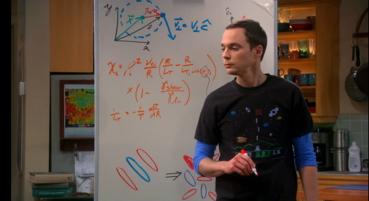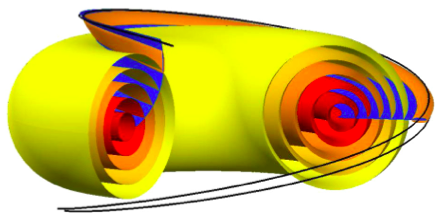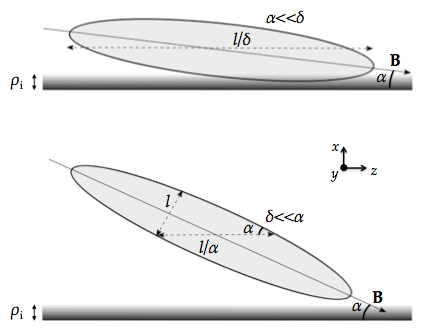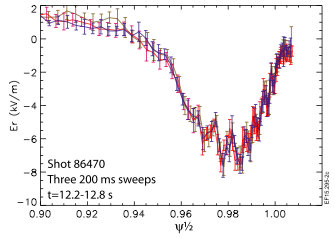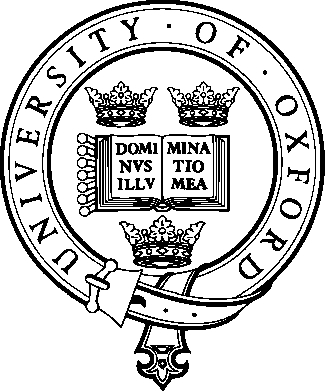

DPhil PROJECTS IN PLASMA PHYSICS
starting in October 2017 (here are the 2018 projects)
Application deadline: 20 January 2017
Oxford Plasma Theory Group welcomes applications for DPhil studies and research in plasma physics in the areas of magnetic confinement fusion (MCF) and plasma astrophysics.
Potential supervisors: Prof Michael Barnes (projects 1, 6), Prof Steven Cowley FRS (project 2), Prof Felix Parra Diaz (projects 3, 4), Prof Alexander Schekochihin (projects 5, 6, 8; also here), Prof Steven Balbus FRS (project 5), Prof Gianluca Gregori (project 7), Prof Subir Sarkar (project 7)
Size of intake: this depends on various hard-to-predict circumstances, in particular funding arragements; this year (2016), we accepted 4 fully funded students, sponsored by CCFE/EUROfusion, UK EPSRC, Berrow Foundation (Switzerland) and A*STAR Foundation (Singapore).
*** MORE NEW PROJECTS MAY APPEAR ON THIS PAGE IN DUE COURSE. COME BACK AND CHECK! ***
- If you are interested in MCF (either
theoretical or experimental), apply
for a DPhil in Theoretical Physics.
- If you are interested in plasma
astrophysics, apply
for a DPhil in Astrophysics.
- For the plasma astrophysics projects, we
recommend that you ALSO apply
for a DPhil in Theoretical
Physics
(indicating plasma physics as your preferred area) as this will help
us quickly identify your application and consider you for all available
projects and funding opportunities (scholarships). Please also apply to
both degrees if you are generally interested in plasma physics and are
flexible between its different areas.
- Internal
Oxford scholarships: there are a number of scholarships in
physics
available at Oxford, including Clarendon
Scholarships, the James
Buckee
Scholarship at Merton College, the
Oxford-Berman Studentship at University College, the MPLS Division
EPSRC Excellence Scholatships and others. Note that in order to be
considered for a scholarship
funded by a particular College, you do not need to select that College
as your College of first choice, but you must indicate on your
application form that you are willing to move to another College to
gain an offer of funding (this simply requires that you leave blank the
box in the funding section of the University’s online application form
that must be ticked if you do not wish to be considered by another
college than your stated preferred college). There is one (known to us)
exception to this principle: if you
are studying at a Swiss university, apply to Lincoln College to
be eligible for a Berrow
Foundation Scholarship. If you are from India (or certain other developing countries), make sure to indicate on your application that you wish to be considered for a Felix Scholarship.
- Choice of College:
you may apply to any College that accepts graduate applicants in
Physics. Here is a list of some of the Colleges where there are
researchers working in plasma physics or closely related areas amongst
Fellows: Corpus Christi (S. Cowley, P. Dellar), Exeter (G. Cotter), Merton (J. Binney, S. Hooker, A. Schekochihin), LMH (G. Gregori), New (S. Balbus, A. Slyz), St Edmund's Hall (P. Podsiadlowski), St John's (K. Blundell), Trinity (S. Vinko, J. Wark), Univ (M. Barnes, P. Norreys, C. Terquem), Worcester (F. Parra).
- If you are considering applying for an external scholarship and require our endorsement, in the first instance please contact the supervisor with whom you are most interested in working. Note the opportunities for Commonwealth Scholarships.
- You are welcome to address inquiries on science to any of the project supervisors listed below and on the logistical aspects of applying to Ms Michelle Bosher (but do please check first if your question is perhaps already answered here or here).
- All graduate students in plasma physics have access to graduate-level courses taught with the Oxford Master Course in Mathematical and Theoretical Physics (to which you can also apply as a stand-alone MSc degree) and the Oxford-Warwick-Imperial Centre for Postgraduate Training in Plasma Physics and High Energy Density Science.

Projects in Fusion Plasmas

Our fusion theory projects are all offered jointly with researchers at the U.K.A.E.A. Culham Centre for Fusion Energy (CCFE).
At the application stage, you are not required to (although you may if you wish) indicate which project you prefer --- we will consider all applicants purely on intellectual merit. If you are offered admission, we will strive to give you the opportunity to work on the project of your choice. Note that the project descriptions given below are not set in stone and we are willing to discuss modifications and adjustments to them that might better reflect your interests and inclinations.
1. Suppressing
turbulence in magnetic confinement fusion plasmas
Supervisor: Prof Michael Barnes
CCFE co-supervisor: Dr Michele Romanelli
Background Reading:
1. I. G. Abel et al., “Multiscale gyrokinetics for rotating tokamak plasmas: fluctuations, transport and energy flows,” Rep. Prog. Phys. 76, 116201 (2013)
2. Erupting plasmas: explosive instability and fusion
Supervisor: Prof Steven Cowley FRS
CCFE co-supervisor: Dr Christopher Ham
Background Reading:
1. C. J. Ham, S. C. Cowley, G. Brochard, and H. R. Wilson, “Nonlinear stability and saturation of ballooning modes in tokamaks,” Phys. Rev. Lett. 116, 235001 (2016)
2. S. C. Cowley, B. Cowley, S. A. Henneberg, H. R. Wilson, “Explosive instability and erupting flux tubes in a magnetized plasma,” Proc. R. Soc. London A 471, 20140913 (2015)
3. Plasma physics on the Edge: transition from electron- to ion-repelling wall in modern tokamaks
Supervisor: Prof Felix Parra Diaz
CCFE co-supervisor: Dr Fulvio Militello
Background Reading:
1. A. Geraldini, F. I. Parra, and F. Millitello, “Gyrokinetic treatment of a grazing angle magnetic field,” submitted to Plasma Phys. Control. Fusion (2016); preprint: arXiv:1608.02002
4. Explaining the High-Confinement Mode in JET
Supervisor: Prof Felix Parra Diaz
CCFE co-supervisor: Dr Jon Hillesheim
Background Reading:
1. J. C. Hillesheim et al., “Stationary zonal flows during the formation of the edge transport barrier in the JET tokamak,” Phys. Rev. Lett. 116, 065002 (2016)
Supervisor: Prof Michael Barnes
CCFE co-supervisor: Dr Michele Romanelli
Background Reading:
1. I. G. Abel et al., “Multiscale gyrokinetics for rotating tokamak plasmas: fluctuations, transport and energy flows,” Rep. Prog. Phys. 76, 116201 (2013)
2. Erupting plasmas: explosive instability and fusion
Supervisor: Prof Steven Cowley FRS
CCFE co-supervisor: Dr Christopher Ham
Background Reading:
1. C. J. Ham, S. C. Cowley, G. Brochard, and H. R. Wilson, “Nonlinear stability and saturation of ballooning modes in tokamaks,” Phys. Rev. Lett. 116, 235001 (2016)
2. S. C. Cowley, B. Cowley, S. A. Henneberg, H. R. Wilson, “Explosive instability and erupting flux tubes in a magnetized plasma,” Proc. R. Soc. London A 471, 20140913 (2015)
3. Plasma physics on the Edge: transition from electron- to ion-repelling wall in modern tokamaks
Supervisor: Prof Felix Parra Diaz
CCFE co-supervisor: Dr Fulvio Militello
Background Reading:
1. A. Geraldini, F. I. Parra, and F. Millitello, “Gyrokinetic treatment of a grazing angle magnetic field,” submitted to Plasma Phys. Control. Fusion (2016); preprint: arXiv:1608.02002
4. Explaining the High-Confinement Mode in JET
Supervisor: Prof Felix Parra Diaz
CCFE co-supervisor: Dr Jon Hillesheim
Background Reading:
1. J. C. Hillesheim et al., “Stationary zonal flows during the formation of the edge transport barrier in the JET tokamak,” Phys. Rev. Lett. 116, 065002 (2016)

Projects in Plasma Astrophysics
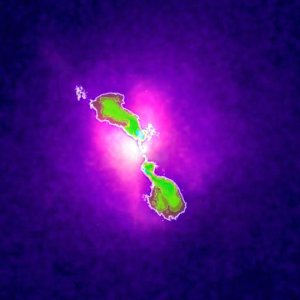
Candidates interested in any of these projects or generally in plasma astrophysics, astrophysical turbulence and/or dynamo theory are welcome to get in touch with prospective supervisors for further information. A more bespoke project can be designed to align with the inclinations and interests of the student (for example how much emphasis is placed on analytical vs. numerical methods or kinetic theory vs. fluid dynamics, etc., is negotiable).
5. Dynamics, thermodynamics and plasma physics of galaxy clusters: wave damping and turbulent heating
Supervisors: Prof Steven Balbus FRS and Prof Alexander Schekochihin
Galaxy clusters are the largest astrophysical objects: the basic units in which matter clumps together in the Universe. We observe them via X-ray emission of the hot, isonised gas (plasma) that makes up most of their visible mass (which is gravitationally confined within the potential well associated with the much more massive dark-matter component). Clusters are believed to be self-regulated (thermo)dynamical systems: gas within them accretes onto the central black hole --- "Active Galactic Nucleus" --- whose ejecta then stir up and reheat the cluster gas [2]. How this heating occurs, i.e., how the ionised gas in clusters maintains its very high X-ray emission temperature has been a longstanding problem in theoretical astrophysics --- and, indeed, the heating problem extends to hot dilute gases in many other astrophysical environments as well. Before the loss of the X-ray satellite Hitomi, the instrument was able to carry out a study of the Perseus Cluster, directly measuring (via line widths) the turbulent velocities in a galaxy cluster for the first time. The values measured were precisely of the right order of magnitude for the turbulent heating to maintain the cluster gas against radiative losses from thermal Bremsstrahlung cooling [5]. This gives us some degree of confidence in ideas attributing the heating of the gas to the dissipation of internal waves [1] and mechanically stirred turbulence [2,4,5]. In this project, motivated by the notion that the heating of the cluster gas is dynamical, we will study how waves in cluster gas propagate and dissipate. The gas is extremely dilute in X-ray clusters, so dilute that ions and electrons spiralling around magnetic lines of force make very many such circuits before colliding with each other. How waves propagate under these conditions [1,7] and how macroscopic motions interact with rich microscopic zoo of fluctuations that feeds off them [3,6] is not fully understood, and is the topic of this proposed project. We will study the mathematical behaviour of waves in a dilute magnetised plasma both for its own sake and, because the waves are very likely thermalised by damping, as a possible solution to an outstanding problem in astrophysics. Depending upon the interest and abilities of the student, the approach may be primarily analytic (e.g., [1,3,7]), numerical (e.g., [6]), phenomenological (e.g., [2,4]) or a mixture of all three.
Background Reading:
1. S. A. Balbus and N. Soker, “Resonant excitation of internal gravity waves in cluster cooling flows,” Astrophys. J. 357, 353 (1990)
2. E. Churazov, R. Sunyaev, W. Forman, and H. Boehringer, “Cooling flows as a calorimeter of active galactic nucleus mechanical power,” Mon. Not. R. Astron. Soc., 332, 729 (2002)
3. M. S. Rosin, A. A. Schekochihin, F. Rincon, and S. C. Cowley, “A nonlinear theory of the parallel firehose and gyrothermal instabilities in a weakly collisional plasma,” Mon. Not. R. Astron. Soc. 413, 7 (2011)
4. M. W. Kunz, A. A. Schekochihin, S. C. Cowley, J. J. Binney, and J. S. Sanders, “A thermally stable heating mechanism for the intracluster medium: turbulence, magnetic fields and plasma instabilities,” Mon. Not. R. Astron. Soc. 410, 2446 (2011)
5. I. Zhuravleva et al., “Turbulent heating in galaxy clusters brightest in X-rays,” Nature 515, 85 (2014)
6. S. Melville, A. A. Schekochihin, and M. W. Kunz, “Pressure-anisotropy-driven microturbulence and magnetic-field evolution in a shearing, collisionless plasma,” Mon. Not. R. Astron. Soc. 459, 2701 (2016)
7. J. Squire, E. Quataert, and A. A. Schekochihin, “A stringent limit of the amplitude of Alfvenic perturbations in high-beta low-collisionality plasmas,” arXiv:1605.02759
6. Free-energy flows in turbulent astrophysical plasmas
Supervisors: Prof Michael Barnes and Prof Alexander Schekochihin
In magnetised astrophysical plasmas, there is a turbulent cascade of electromagnetic fluctuations carrying free energy from large to small scales. The energy is typically extracted from large-scale sources (e.g., in the solar wind, the violent activity in the Sun’s corona; in accretion discs, the Keplerian shear flow; in galaxy clusters, outbursts from active galactic nuclei) and deposited into heat – the internal energy of ions and electrons. In order for this dissipation of energy to happen, the energy must reach small scales – in weakly collisional plasmas, these are small scales in the 6D kinetic phase space, i.e., what emerges are large spatial gradients of electric and magnetic fields and large gradients in velocity of the particle distribution functions. This gives rise to two very intriguing questions: (1) how does the energy flow through the 6D phase space and what therefore is the structure of the fluctuations in this space: their spectra, phase-space correlation functions etc. (these fluctuations are best observed in the solar wind, but these days we can also measure density and magnetic fluctuations in galaxy clusters, via X-ray and radio observations); (2) when turbulent fluctuations are dissipated into particle heat, how is their energy partitioned between various species of particles that populate the plasma: electrons, bulk ions, fast heavy particles (e.g., alpha particles and heavy ions). The latter question is particularly important for extragalactic plasmas because all we can observe is radiation from the particles and knowing where the internal energy of each species came from is key to constructing and verifying theories both of turbulence and of macroscale dynamics and thermodynamics. This project has an analytical and a numerical dimension (which of these will dominate depends on the student’s inclinations). Analytically, we will work out a theory of phase space cascade at spatial scales between the ion and electron Larmor scales (we have done some preliminary work, so we know how to start off on this calculation, but obviously at some point we’ll be wading into unchartered waters). Numerically, we will simulate this cascade using “gyrokinetic” equations – an approach in which we average over the Larmor motion and calculate the distribution function of “Larmor rings of charge” rather than particles (this reduces the dimension of phase space to 5D, making theory more tractable and numerics more affordable). Our key objective will be to work out the energy partition between ions and electrons – this question has fascinated theoreticians for at least 15 years, but we now have the tools to sort it out.
Background Reading:
1. A. A. Schekochihin et al., “Astrophysical gyrokinetics: kinetic and fluid turbulent cascades in magnetized weakly collisional plasmas,” Astrophys. J. Suppl. 182, 310 (2009)
2. T. Tatsuno et al., “Nonlinear phase mixing and phase-space cascade of entropy in gyrokinetic plasma turbulence,” Phys. Rev. Lett. 103, 015003 (2009)
3. M. W. Kunz et al, “Inertial-range kinetic turbulence in pressure-anisotropic astrophysical plasmas,” J. Plasma Phys. 81, 325810501 (2015)
4. A. A. Schekochihin et al., “Phase mixing vs. nonlinear advection in drift-kinetic plasma turbulence,” J. Plasma Phys. 82, 905820212 (2016)
Supervisors: Prof Steven Balbus FRS and Prof Alexander Schekochihin
Galaxy clusters are the largest astrophysical objects: the basic units in which matter clumps together in the Universe. We observe them via X-ray emission of the hot, isonised gas (plasma) that makes up most of their visible mass (which is gravitationally confined within the potential well associated with the much more massive dark-matter component). Clusters are believed to be self-regulated (thermo)dynamical systems: gas within them accretes onto the central black hole --- "Active Galactic Nucleus" --- whose ejecta then stir up and reheat the cluster gas [2]. How this heating occurs, i.e., how the ionised gas in clusters maintains its very high X-ray emission temperature has been a longstanding problem in theoretical astrophysics --- and, indeed, the heating problem extends to hot dilute gases in many other astrophysical environments as well. Before the loss of the X-ray satellite Hitomi, the instrument was able to carry out a study of the Perseus Cluster, directly measuring (via line widths) the turbulent velocities in a galaxy cluster for the first time. The values measured were precisely of the right order of magnitude for the turbulent heating to maintain the cluster gas against radiative losses from thermal Bremsstrahlung cooling [5]. This gives us some degree of confidence in ideas attributing the heating of the gas to the dissipation of internal waves [1] and mechanically stirred turbulence [2,4,5]. In this project, motivated by the notion that the heating of the cluster gas is dynamical, we will study how waves in cluster gas propagate and dissipate. The gas is extremely dilute in X-ray clusters, so dilute that ions and electrons spiralling around magnetic lines of force make very many such circuits before colliding with each other. How waves propagate under these conditions [1,7] and how macroscopic motions interact with rich microscopic zoo of fluctuations that feeds off them [3,6] is not fully understood, and is the topic of this proposed project. We will study the mathematical behaviour of waves in a dilute magnetised plasma both for its own sake and, because the waves are very likely thermalised by damping, as a possible solution to an outstanding problem in astrophysics. Depending upon the interest and abilities of the student, the approach may be primarily analytic (e.g., [1,3,7]), numerical (e.g., [6]), phenomenological (e.g., [2,4]) or a mixture of all three.
Background Reading:
1. S. A. Balbus and N. Soker, “Resonant excitation of internal gravity waves in cluster cooling flows,” Astrophys. J. 357, 353 (1990)
2. E. Churazov, R. Sunyaev, W. Forman, and H. Boehringer, “Cooling flows as a calorimeter of active galactic nucleus mechanical power,” Mon. Not. R. Astron. Soc., 332, 729 (2002)
3. M. S. Rosin, A. A. Schekochihin, F. Rincon, and S. C. Cowley, “A nonlinear theory of the parallel firehose and gyrothermal instabilities in a weakly collisional plasma,” Mon. Not. R. Astron. Soc. 413, 7 (2011)
4. M. W. Kunz, A. A. Schekochihin, S. C. Cowley, J. J. Binney, and J. S. Sanders, “A thermally stable heating mechanism for the intracluster medium: turbulence, magnetic fields and plasma instabilities,” Mon. Not. R. Astron. Soc. 410, 2446 (2011)
5. I. Zhuravleva et al., “Turbulent heating in galaxy clusters brightest in X-rays,” Nature 515, 85 (2014)
6. S. Melville, A. A. Schekochihin, and M. W. Kunz, “Pressure-anisotropy-driven microturbulence and magnetic-field evolution in a shearing, collisionless plasma,” Mon. Not. R. Astron. Soc. 459, 2701 (2016)
7. J. Squire, E. Quataert, and A. A. Schekochihin, “A stringent limit of the amplitude of Alfvenic perturbations in high-beta low-collisionality plasmas,” arXiv:1605.02759
6. Free-energy flows in turbulent astrophysical plasmas
Supervisors: Prof Michael Barnes and Prof Alexander Schekochihin
In magnetised astrophysical plasmas, there is a turbulent cascade of electromagnetic fluctuations carrying free energy from large to small scales. The energy is typically extracted from large-scale sources (e.g., in the solar wind, the violent activity in the Sun’s corona; in accretion discs, the Keplerian shear flow; in galaxy clusters, outbursts from active galactic nuclei) and deposited into heat – the internal energy of ions and electrons. In order for this dissipation of energy to happen, the energy must reach small scales – in weakly collisional plasmas, these are small scales in the 6D kinetic phase space, i.e., what emerges are large spatial gradients of electric and magnetic fields and large gradients in velocity of the particle distribution functions. This gives rise to two very intriguing questions: (1) how does the energy flow through the 6D phase space and what therefore is the structure of the fluctuations in this space: their spectra, phase-space correlation functions etc. (these fluctuations are best observed in the solar wind, but these days we can also measure density and magnetic fluctuations in galaxy clusters, via X-ray and radio observations); (2) when turbulent fluctuations are dissipated into particle heat, how is their energy partitioned between various species of particles that populate the plasma: electrons, bulk ions, fast heavy particles (e.g., alpha particles and heavy ions). The latter question is particularly important for extragalactic plasmas because all we can observe is radiation from the particles and knowing where the internal energy of each species came from is key to constructing and verifying theories both of turbulence and of macroscale dynamics and thermodynamics. This project has an analytical and a numerical dimension (which of these will dominate depends on the student’s inclinations). Analytically, we will work out a theory of phase space cascade at spatial scales between the ion and electron Larmor scales (we have done some preliminary work, so we know how to start off on this calculation, but obviously at some point we’ll be wading into unchartered waters). Numerically, we will simulate this cascade using “gyrokinetic” equations – an approach in which we average over the Larmor motion and calculate the distribution function of “Larmor rings of charge” rather than particles (this reduces the dimension of phase space to 5D, making theory more tractable and numerics more affordable). Our key objective will be to work out the energy partition between ions and electrons – this question has fascinated theoreticians for at least 15 years, but we now have the tools to sort it out.
Background Reading:
1. A. A. Schekochihin et al., “Astrophysical gyrokinetics: kinetic and fluid turbulent cascades in magnetized weakly collisional plasmas,” Astrophys. J. Suppl. 182, 310 (2009)
2. T. Tatsuno et al., “Nonlinear phase mixing and phase-space cascade of entropy in gyrokinetic plasma turbulence,” Phys. Rev. Lett. 103, 015003 (2009)
3. M. W. Kunz et al, “Inertial-range kinetic turbulence in pressure-anisotropic astrophysical plasmas,” J. Plasma Phys. 81, 325810501 (2015)
4. A. A. Schekochihin et al., “Phase mixing vs. nonlinear advection in drift-kinetic plasma turbulence,” J. Plasma Phys. 82, 905820212 (2016)
7. Second-order Fermi acceleration by MHD turbulence in young supernova remnants
Supervisors: Prof Subir Sarkar and Prof Gianluca Gregori
(for this project, you may also apply for a DPhil in Atomic and Laser Physics)
Background Reading:
1. V. Petrosian “Stochastic Acceleration by Turbulence,” Space Sci. Rev. 173, 535 (2012)
Supervisors: Prof Subir Sarkar and Prof Gianluca Gregori
(for this project, you may also apply for a DPhil in Atomic and Laser Physics)
The origin of high-energy cosmic rays still remains a mystery, a
century after their discovery. Although several different processes and
astrophysical sites may be implicated, there is a consensus that
diffusive shock acceleration in Galactic supernova remnants accelerates
the bulk of hadronic cosmic rays, up to hundreds of TeV in energy.
However, observations of radio synchrotron emission by high-energy
electrons in young supernova remnants are better understood if the
electrons are accelerated by turbulence behind a decelerating shock
wave via the 2nd-order Fermi process. In this project, we propose to
develop numerical simulations of such turbulence in order to determine
its spectrum and thus calculate the time evolution of the
relativistic-electron spectrum. The simulations will be validated
against laboratory experiments in magnetohydrodynamic turbulence, using
the largest laser systems in the world, and the predictions of the
radio emission will be compared in detail with observations of
Cassiopeia A as well as of other young supernova remnants such as
SN1987A and G1.9+0.3.
Background Reading:
1. V. Petrosian “Stochastic Acceleration by Turbulence,” Space Sci. Rev. 173, 535 (2012)
8.
Turbulent cascade
through the ion cyclotron resonance in space plasmas
Supervisor: Prof Alexander Schekochihin
This project is related to the general theme of the project on free-energy flows, but focuses on a single problem that requires analytical handling in the fully kinetic 6D framework and a programme of numerical simulations of the full kinetic equation for a plasma. The computational challenges involved in 6D simulations are enormous. The problem proposed for this project is therefore carefully chosen to be both of fundamental importance and solvable in a definitive way with existing resources. In environments such as the solar wind (and, as far as we can fathom, more generally in cosmic plasmas from heliospheric to extragalactic), the turbulent cascade of electromagnetic fluctuations reaches ion Larmor spatial scales while frequencies remain smaller than the ion cyclotron frequency (these are the radius and frequency of the particle gyration in a magnetic field). Under these conditions, the “gyrokinetic” approximation (5D rather than 6D) holds. However, in many parameter regimes, the ion cyclotron frequency is reached at sub-Larmor scales. Linear theory tells us that in the narrow region of frequencies around the ion cyclotron, electromagnetic fluctuations fall into resonance with Larmor motion and thus can transfer their energy into the particle motion, leading to ion heating. The nonlinear question is how much (if any) of the turbulent free energy will be sucked into this resonance and how much will, via nonlinear coupling, simply leapfrog it and continue cascading until converted into electron heat at the electron Larmor scale? This question cannot be resolved via any low-frequency model (like gyrokinetics) and will therefore be answered via 6D fully kinetic simulations restricted to a narrow window of scales around the resonance. Theory is falsifiable in this area: one can (and does) measure ion distribution functions in the solar wind (although the physics results apply much more broadly). If the student is so inclined, we may get involved directly with analysis of such measurements. This project is likely to involve a collaboration with Prof Matthew Kunz at Princeton University.
Background Reading:
1. G. G. Howes et al., “A model of turbulence in magnetized plasmas: implications for the dissipation range in the solar wind,” J. Geophys. Res. 113, A05103 (2008)
2. A. A. Schekochihin et al., “Astrophysical gyrokinetics: kinetic and fluid turbulent cascades in magnetized weakly collisional plasmas,” Astrophys. J. Suppl. 182, 310 (2009)
Supervisor: Prof Alexander Schekochihin
This project is related to the general theme of the project on free-energy flows, but focuses on a single problem that requires analytical handling in the fully kinetic 6D framework and a programme of numerical simulations of the full kinetic equation for a plasma. The computational challenges involved in 6D simulations are enormous. The problem proposed for this project is therefore carefully chosen to be both of fundamental importance and solvable in a definitive way with existing resources. In environments such as the solar wind (and, as far as we can fathom, more generally in cosmic plasmas from heliospheric to extragalactic), the turbulent cascade of electromagnetic fluctuations reaches ion Larmor spatial scales while frequencies remain smaller than the ion cyclotron frequency (these are the radius and frequency of the particle gyration in a magnetic field). Under these conditions, the “gyrokinetic” approximation (5D rather than 6D) holds. However, in many parameter regimes, the ion cyclotron frequency is reached at sub-Larmor scales. Linear theory tells us that in the narrow region of frequencies around the ion cyclotron, electromagnetic fluctuations fall into resonance with Larmor motion and thus can transfer their energy into the particle motion, leading to ion heating. The nonlinear question is how much (if any) of the turbulent free energy will be sucked into this resonance and how much will, via nonlinear coupling, simply leapfrog it and continue cascading until converted into electron heat at the electron Larmor scale? This question cannot be resolved via any low-frequency model (like gyrokinetics) and will therefore be answered via 6D fully kinetic simulations restricted to a narrow window of scales around the resonance. Theory is falsifiable in this area: one can (and does) measure ion distribution functions in the solar wind (although the physics results apply much more broadly). If the student is so inclined, we may get involved directly with analysis of such measurements. This project is likely to involve a collaboration with Prof Matthew Kunz at Princeton University.
Background Reading:
1. G. G. Howes et al., “A model of turbulence in magnetized plasmas: implications for the dissipation range in the solar wind,” J. Geophys. Res. 113, A05103 (2008)
2. A. A. Schekochihin et al., “Astrophysical gyrokinetics: kinetic and fluid turbulent cascades in magnetized weakly collisional plasmas,” Astrophys. J. Suppl. 182, 310 (2009)
